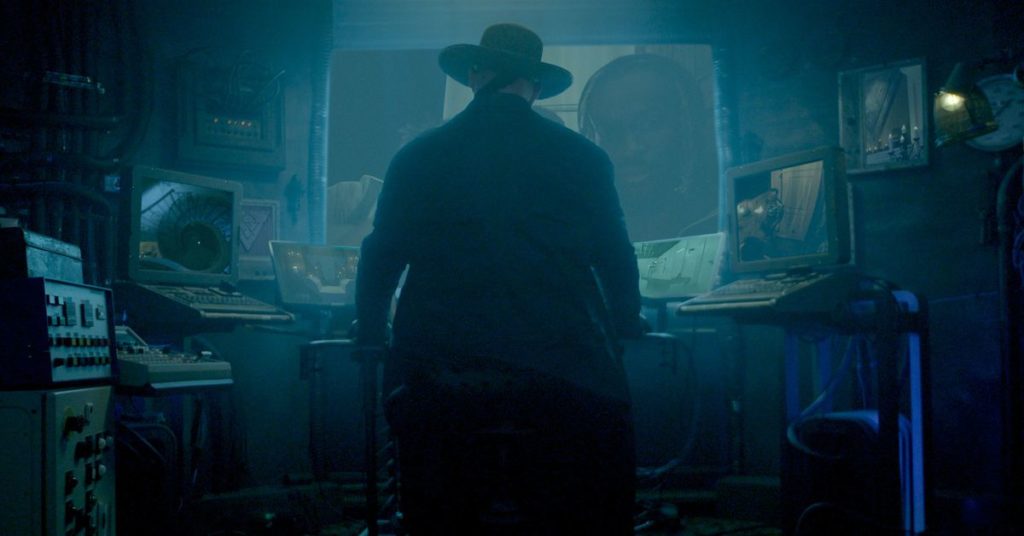How Netflix makes its choose-your-own adventure stories

Netflix isn’t just about movies and television anymore — it’s also about InteractivityYou can find it here. The streaming platform has 15 interactive titles. Each title comes with its own level of viewer agency. It’s also fun! But behind every one of these interactive specials, there’s a team making sure that they reach a certain level of, well, interactivity.
These titles include the WWE tie in Escape the Undertaker, is one of the platform’s most interactive yet, following three wrestlers as they journey to the notorious WWE villain’s mansion to steal his magical urn. Escape from the Undertaker comes from director Ben Simms — who is also responsible for Netflix’s three Bear Grylls interactive survival specials. Simms was kind enough to sit down and discuss the creation of these specials. We also learned how Simms engineers them for maximum interaction.
:no_upscale()/cdn.vox-cdn.com/uploads/chorus_asset/file/22831690/Escape_The_Undertaker_01_11_47_1220210904_4552_1yo14jd.jpeg)
Image by Netflix
Step One: Find the “ultimate success”
The first thing to figure out — beyond the actual concept and key characters — is the “ultimate success.” Whether that’s getting Bear Grylls off the mountain where he’s stranded, or destroying the Undertaker’s urn once and for all, depends on the title, but the win condition has to be established before all the other endings are plotted.
“The big thing, especially with Netflix, is making sure there’s a variance in endings and different levels of success,” explains Simms. “So once you have what the ultimate success might be, everything else is built around that, and different iterations come from whatever that ultimate success is.”
Step Two: Plot out the other endings — and balance them
The team must decide on the ultimate success and then find the negative endings. It’s not as easy as simply coming up with alternatives, though. Playtesting starts really early in the design process — not just to figure out the title’s technical aspects, but to make sure the entire experience is enjoyable.
“You want to make sure things are balanced enough so that there isn’t necessarily a lopsided path you could take, that’s going to just be more exciting and look and sound much better than the rest,” Simms says. Simms says that the team is careful to balance out all possible paths. The case of Escape the UndertakerThe paths, for example, take the viewer through alternative routes within the house to discover new places. You can also find other routes through the house. Escape the Undertaker escapes (ha ha) some of the pitfalls of other Netflix Interactives, where choices aren’t really choices, so much as brief segues.
Step three: Decide when an ending is an end
The recurring element of Netflix Interactive is that viewers can make new choices after making a mistake. Simms says that when creators are figuring out when to start viewers back at a checkpoint, the team must take audience investment into account — if you’re deep in a story, you don’t want to have to start over from scratch, but if you’ve just started, it’s not as much of a hit.
“It usually ends up being somewhere on the midpoint, and somewhere around the beginning of the third act, where you’re invested enough in the stakes,” explains Simms. “The stakes get raised a bit so that your choices, hopefully along the way, seem to matter more and more.”
Step four: Combine the choices
There is a big difference in titles such as You vs. WildAnd Escape the UndertakerThis is the way the choices are integrated into the story. Regardless of the storyline, the goal is to make the choices cohesive — but that comes easier in some stories than in others.
“You don’t want it to feel too intrusive. If it’s a title where the character, the talent or the person within the story, is breaking the fourth wall and addressing the audience, that’s a little bit different, and can be done a bit easier,” Simms says.
:no_upscale()/cdn.vox-cdn.com/uploads/chorus_asset/file/22905208/You_vs._Wild__Out_Cold_2.jpg)
Image by Netflix
Ultimately, the trick is streamlining the scenes as much as possible to highlight the choice — while still making them feel like scenes and not prompts. Simms adds, “It should be as good of a scene as it possibly can be without it being interactive — it just happens to be interactive.”
Step five: The Special Film
There are “extra layers” to shooting an interactive special versus shooting a regular movie, says Simms, and the biggest challenge comes in filming the same scenes over and over with slightly different contexts. Simms was able to quickly adapt and think fast in both of the projects he worked on.
“[Bear Grylls]He is an excellent actor in the moment and can adapt to extreme circumstances. For him, it was very natural to adapt or completely change and pivot the tone of the scene,” says Simms. “The same goes for all the WWE talent. They’re live performers, so it was very advantageous to work with them and be able to say ‘Ok, now you’re happy. Now you’re sad.’ It’s obviously not that simplistic, but they can, within a moment, pivot and understand that we’re doing a different version of the same scene.”
Netflix Interactives’ Endgame
If Netflix Interactives continue to get more complex — and so far, that seems to be the trend — Simms says that improved production quality could lend itself to even more interactivity. What is the coolest idea?
“I could see some scenario of almost a personality test based on choices as a viewer — whether it’s based on your Netflix history, or based on your online history,” says Simms. “I could just see it getting more and more personalized in that capacity.”
Escape the UndertakerThe You vs. Wild titles — as well as the other Netflix Interactives — are available to stream on Netflix.
#Netflix #chooseyourown Adventure #stories








